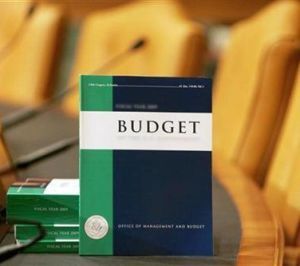 | « Back to article | Print this article |
Voters should demand that the Budget provide numbers and implications that are easy for them to understand
 It is February, that month of the year when the annual Budget of the central government takes centre stage.
It is February, that month of the year when the annual Budget of the central government takes centre stage.
The Economic Survey is usually made public a day before the Budget is presented.
As expected, the media coverage is already tending to be repetitive or too gushy.
The hype surrounding the Budget gives it undue importance when assessed against the need for continuous government policy making and legislative, executive follow up action.
This article attempts to demystify the Budget for the non-technically inclined readers of this newspaper.
The secrecy surrounding tax proposals on exemptions and concessions makes markets follow Budget announcements with trepidation.
There is enough anecdotal evidence from the past to suggest that such confidentiality benefits individuals with prior access to privileged Budget information.
Consequently, the broad contours of such changes, if any, should be provided well in advance of the Budget to give an opportunity to those likely to be impacted to convey their views.
As for major policy reforms, these could be announced from time to time and do not have to coincide with the Budget.
The steep decline in oil prices has reduced India’s current account deficit despite merchandise exports shrinking in the third quarter of 2014-15.
The other wide imperatives for the economy, namely promotion of higher growth coupled with low inflation, are usually lost in analysing the minutiae in the Budget and the extent to which stock markets rise or fall.
Budget 2015: Complete Coverage
Equity market capitalisation currently stands at about 90 per cent of GDP and as per RBI’s latest annual report only 4.1 per cent of the household sector’s financial savings were invested in stocks and debentures as of 2012-13.
About 57 per cent of such savings were invested in fixed deposits, 17.2 per cent with LIC and other insurance companies and 1.7 per cent in provident and pension funds.
Positive business sentiments would be promoted if this Budget includes language to resolve pending high profile tax cases.
For instance, it is time to encourage foreign and domestic investment by disposing the Vodafone and several other big ticket cases involving not just foreign but also companies headquartered in India.
Our revenue authorities often make highly inflated tax claims to meet over ambitious targets.
It follows that such cases invariably end up in courts further clogging our sclerotic judicial system.
The Budget number which is discussed ad nauseam is the gross fiscal deficit which was projected at 4.1 per cent of GDP last year.
In simplistic terms, if the GFD number were to be driven more by well-conceived capital expenditure on infrastructure and the environment rather than on salaries, travel etc. clearly there would be positive implications over the long-term.
This single number can be misleading and Table I shows the break-up over the last 10 years.
In 2014-15 we expect a primary revenue deficit of 0.38 per cent of GDP.
That is, we have little flexibility to invest for the future once internal debt servicing is included.
The government should provide its best estimates for these numbers not just for the current year but on a rolling basis for the next three years.
If the Union Budget were to be formulated on an accrual rather than cash flow basis, as it is done now, principal repayments on internal debt and contingent liabilities of the central government would be included.
It is too late for the government to move to accrual-based accounting for this year’s Budget.
However, voters should expect to see a discussion about the pros and cons of such an approach in the Economic Survey.
It would be useful if the Budget documents were to provide a summary table on central government tax revenues for the last five years in a few countries e.g. Brazil, Turkey, South Africa, China and Indonesia.
We can, of course, obtain these numbers from the web-sites of the ministries of finance of these countries.
We should seek this information in the Economic Survey as it would focus Indian attention on why central governments of several countries at comparable levels of development have tax to GDP ratios of around 20 per cent while for India this number is close to 10 per cent
(Source: World Development Indicators -- World Bank).
The Indian rupee has appreciated substantially against all major trading partner currencies in the last several years.
Obviously, corporate borrowings in hard currencies are low cost if the rupee appreciates. The rupee is not on a free float with the capital account only marginally open for Indians. It is a managed float, the management of which should be the subject of close consultation between the government and RBI.
This is different from the management of domestic interest rates about which government follows a hands-off approach.
In this context, it is surprising that major daily newspapers have referred to India’s foreign exchange reserves having reached record levels on several occasions in the last one month.
It is unclear why FX reserves numbers are repeatedly quoted without reference to short-term (defined as residual maturity of one year) external debt, trade volumes or in months of import cover.
The Economic Survey should address the extent of what appears to be significant rupee overvaluation, adequacy of FX reserves and associated risks in some detail.
To summarise, voters should demand that the Ministry of Finance provide Budget numbers that are easy to understand for the lay person. And, it should be one of the primary tasks of the Budget to explain the implications of the projected numbers.<hr>
Jaimini Bhagwati is currently the RBI Chair Professor at ICRIER